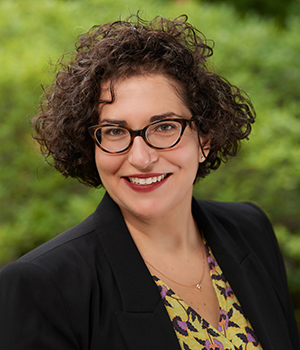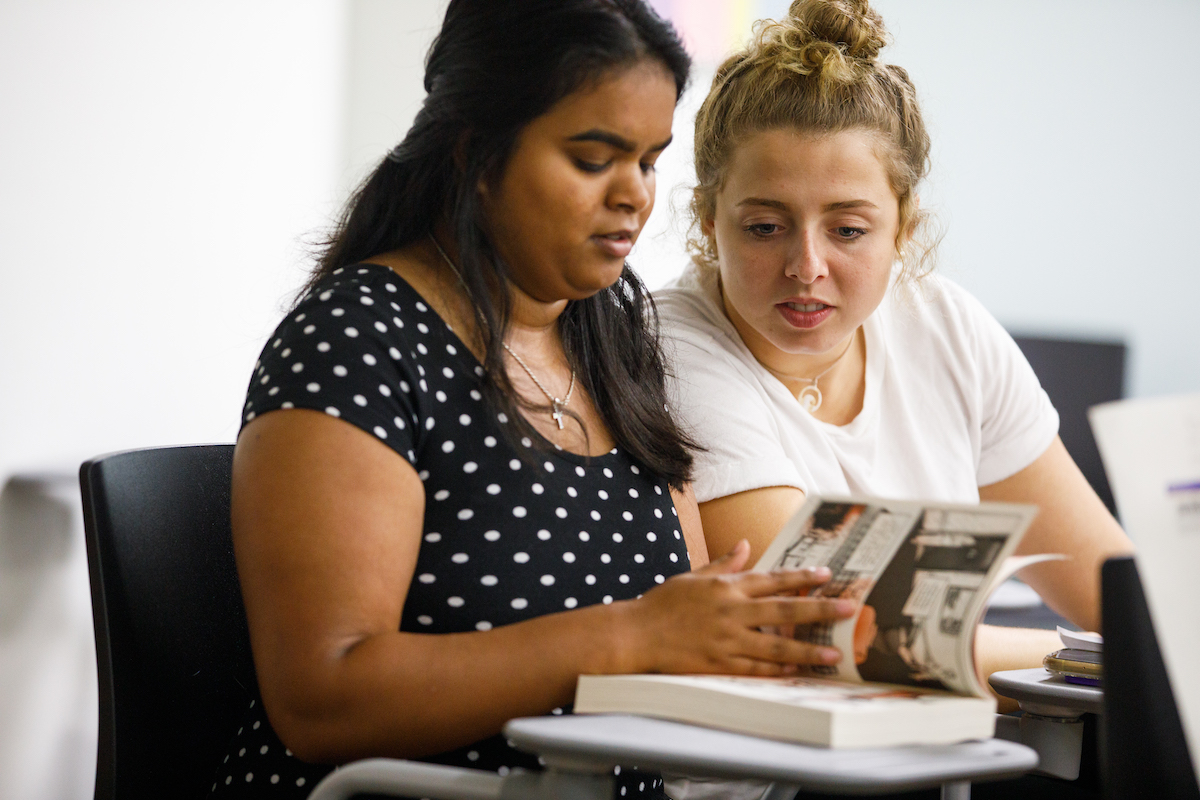Faculty Profile: Nancy Demerdash
Related Programs
Related Posts
Connect With Us
A career as a professor in art history begins in a peculiar way: that is, by accident.

Dr. Nancy Demerdash received her S.M.Arch.S. from the Aga Khan Program for Islamic Architecture at the Massachusetts Institute of Technology, and her M.A. and Ph.D. in art and archaeology from Princeton University. She joined Albion College’s Art and Art History faculty in 2018.
Dr. Nancy Demerdash recalls how, as an adrift pre-med student at the University of Wisconsin-Madison, she “stumbled” into a survey course on ancient to medieval art.
“Who wouldn’t love sitting in a dark, theatrical auditorium, looking at priceless works of art while listening to experts’ knowledge on the cultural histories of these objects and rich lives of their makers?” she muses.
But while Demerdash was hooked by that first, fairly standard course, her research and teaching show just how far—and how much—her discipline can stretch. Demerdash’s interests center on modern and contemporary art and architecture of the Middle East and North Africa, including religious, political and cultural phenomena that influenced the art. It sounds like a lot to cover—and Demerdash explains that really, it’s even bigger than it sounds.
“North Africa, as a region, has always been a kind of liminal zone between Europe, Africa and the Middle East, and so my scholarship has always sat at the crossroads of different subfields of art history, including Islamic art history, African art history, modern European art history,” she adds. “My intellectual interests occupy an esoteric niche in the history of art.”
Family Influences and Memories
Demerdash’s own background is a study in cross-cultural influences.
From one angle—a suburban upbringing, with music lessons and trips to museums on the outskirts of Milwaukee—Demerdash’s own childhood looks unexceptional. But her life was inevitably shaped by her parents’ disparate, divergent upbringings: her mother is a first-generation college grad, raised by a working-class Hungarian family of coal miners in southwestern Pennsylvania; her father was born and bred in a middle-class district of Cairo, and came to the U.S. as an immigrant from Egypt in 1966 to pursue a doctorate in electrical engineering. Early in childhood, she attended Sunday School at her mother’s Methodist church, and later on she also attended Salaam School at her father’s mosque to learn about Islam and begin to learn Arabic. But Egypt played a central role in her personal formation: her father took the family on numerous trips to Cairo, and her Egyptian grandfather spent some of his last years living with her family.
Recounting the memory of her grandfather, she reflects, “I was always fascinated by his dapper dandyism and sense of refinement—he wore impeccably well-tailored, western suits every day of his life—replete with vests, suspenders, and matching jackets and trousers.”
In college, Demerdash studied abroad at the American University of Cairo, where she could spend time with her extended family, improve her Arabic language skills, and pursue her growing interest in North African cultural histories. It also turned out to be a place for drawing connections between the French and British colonial presence in Egypt, her grandfather’s appearance, and her understanding of the work she was doing.
“In many ways, my grandfather was the epitome of the kind of qualities of cultural assimilationism that the British hoped for among the subjects in their colonies,” she says.
As an engineer, her grandfather conducted much of his training in England. “Growing up, I was not only intrigued by the outwardly British manner that my grandfather presented to the world, but I was also interested in the ways that my own family exemplified the ways that knowledge, expertise and technological know-how circulated and were transmitted across metropolitan/imperial centers and colonial peripheries in the modern period,” she explains.
‘A Robust Art History Program’
As half of Albion’s art history faculty, Demerdash has a lot of teaching ground to cover. For her, that’s part of the appeal of the job.
“Albion is a small liberal arts college, in an equally small town, but we have students from all over the country and the world, who need to see and experience art that reflects the cultural and ethnic diversity of themselves and the world around them,” says Demerdash, explaining that she and professor Dr. Bille Wickre continue to expand Albion’s curricular offerings.
“Since coming to Albion, I’ve taught courses including African and contemporary African art; Islamic art and architecture; women, gender and contemporary art of the Middle East; and ancient Egyptian visual culture,” she says. Her long-range plans include courses on cross-cultural arts of the Silk Road; arts of the “Long 19th Century”; a global history of architecture; and a history of design (the last two courses specifically designed to appeal to pre-architecture and graphic design students).
It’s history with an eye to the future, Demerdash explains.
“Professor Wickre and I are working hard to give our students the richest and most diverse array of offerings we can. It’s all a part of our mission to integrate a robust art history program into our new institutional Blueprint for Belonging,” she says.
‘Priceless’ Rewards
There are challenges, for sure. Demerdash notes that beyond art history’s reputation as an “elitist” discipline, many students have had few, or even negative, experiences visiting art museums. Screen-based culture and its reliance on phones, tablets and laptops—though highly visual and fast-paced—also discourage a prolonged examination of, and interaction with, artworks.
But, she reflects, “the rewards of this job are priceless: seeing that ‘eureka!’ sparkle of discovery in a student’s eyes, mid-lecture; making the foreign familiar to students; helping them to debunk stereotypes and their own presuppositions about peoples and cultures they’ve never encountered. My ultimate goal is to inspire students and have them leave my classroom as more resilient, humane, empathic, culturally competent and curious people,” she says.
“Mentorship is really a cornerstone of my work at Albion,” she concludes. “I take pride in guiding and encouraging students to aim high, work industriously, and be the best version of themselves that they can possibly be. And in doing so, I hope that I can be a role model for our students, supporting the values of diversity and inclusion that the College holds dear, while encouraging our students to cherish and champion those values as well, as they grow to become global citizens in their own right.”
